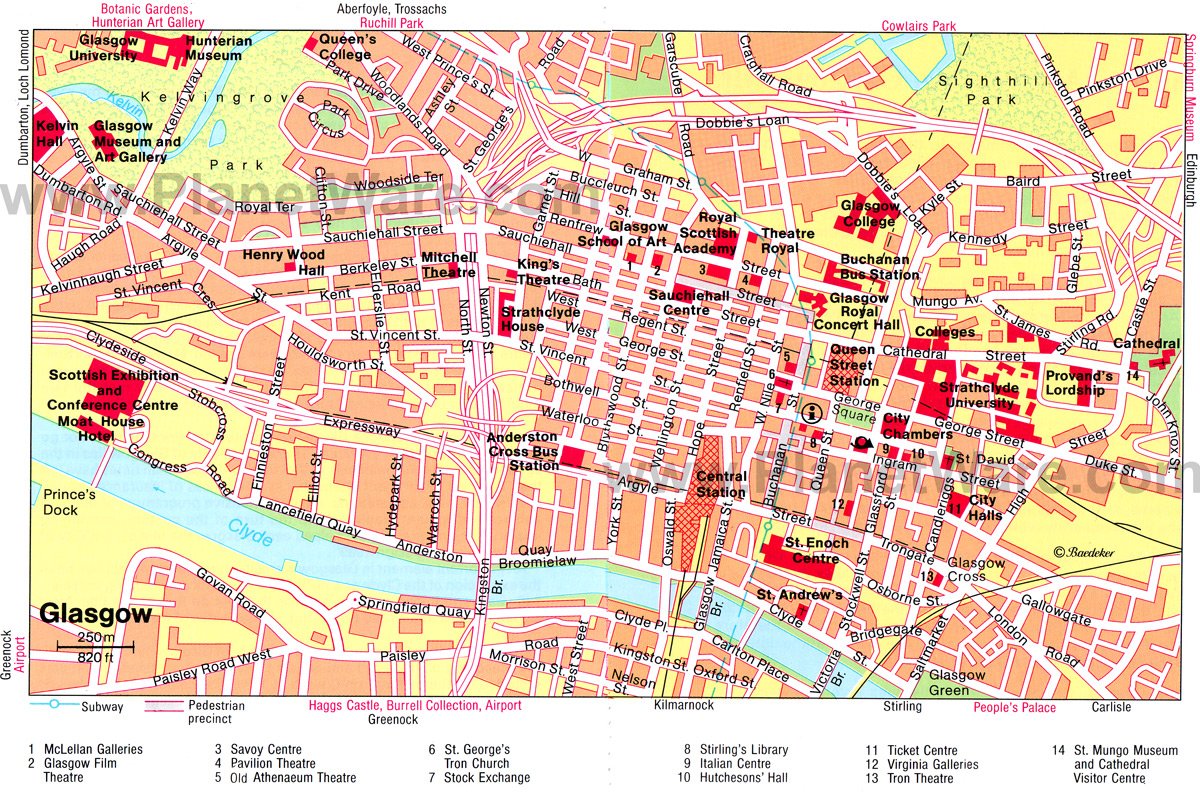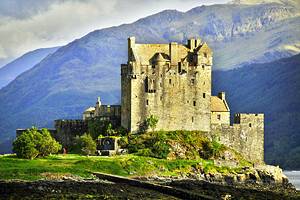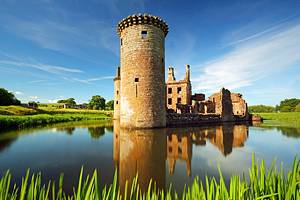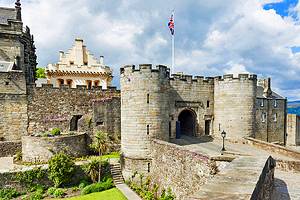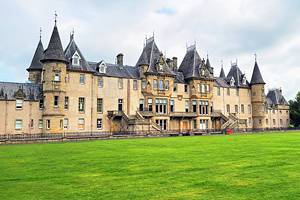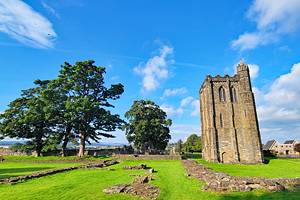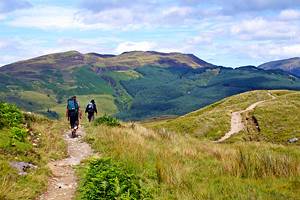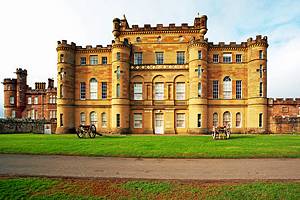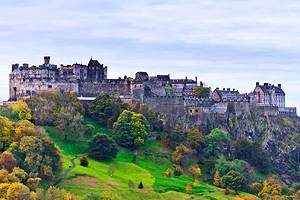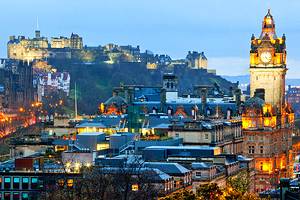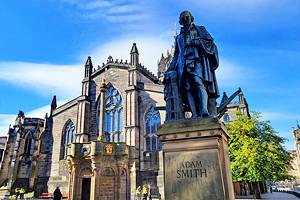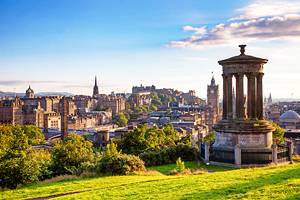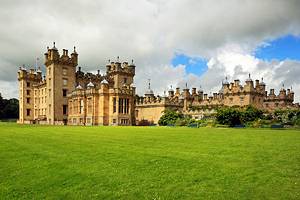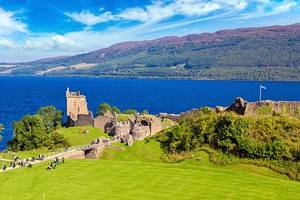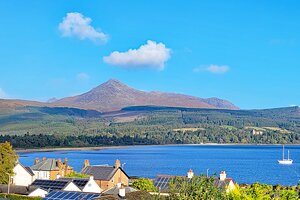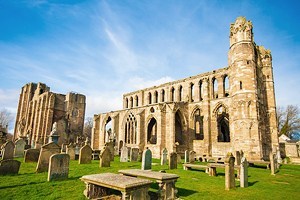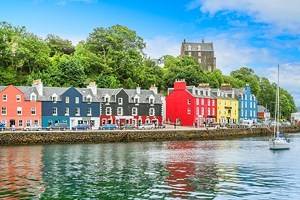Tourist Attractions in Glasgow
Located on the River Clyde, Glasgow has been transformed from an industrial city to Scotland's cultural center, with its excellent museums, art galleries, concert venues, and festivals. Its Gaelic name, meaning "lovely green place," is apt, given its 70 parks and open spaces. Music lovers of all kinds will find plenty of things to do in Glasgow, known as Scotland's music capital, with venues that include the Theatre Royal (home of the Scottish Opera) and the Concert Hall (home of the Royal Scottish Orchestra).
Important cultural events include the Celtic Connections Music Festival and the Gourock Highland Games, and it's also a busy sports town, home to two major league football (soccer) clubs and a rugby club.
One of Glasgow's major attractions for tourists is its relationship with Charles Rennie Mackintosh, founder of the Glasgow School of Art, a major factor in the Arts & Crafts Movement. Buildings, museums, and even a cemetery feature his and his associates' works. To learn more about these and other fun things to do, be sure to refer often to our list of tourist attractions in Glasgow.
Glasgow Cathedral
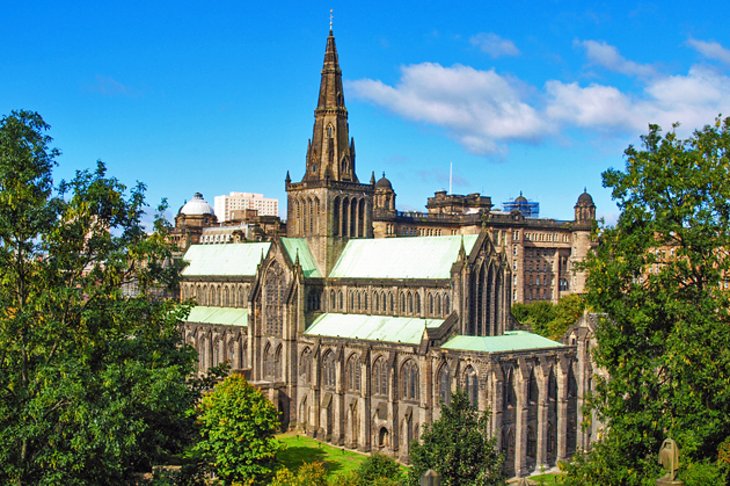
The city's most significant historic building is the 12th-century Glasgow Cathedral, also known as St. Mungo Cathedral or the High Kirk of Glasgow. Seen from both inside and out, it looks as if it dropped out of a giant mold: the lines are clear, and there's no superfluous ornamentation.
Projecting from the south transept is the Blacader Aisle, named after the first bishop of Glasgow. The grandest room in the cathedral, however, is the crypt, which houses the tomb of St. Mungo, founder of the bishopric, who was buried here in AD 603. Although a visit to the cathedral is regarded as one of the top free things to do in Glasgow, donations are always welcome. Guided tours are also available free of charge.
Next door is the St. Mungo Museum of Religious Life and Art, which examines world religions, their rites, and how their doctrines deal with the issues of life and death. Exhibits include Egyptian mummies, Hindu statues, and a Zen Buddhist garden in the courtyard.
Address: Castle Street, Glasgow
Official site: www.glasgowcathedral.org.uk
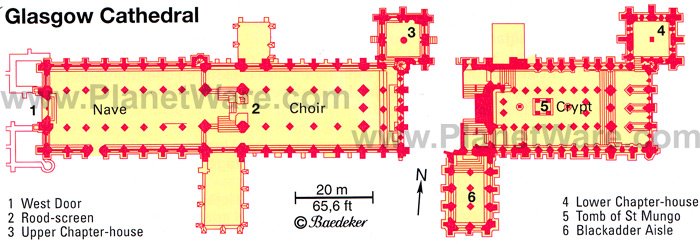
Kelvingrove Art Gallery and Museum
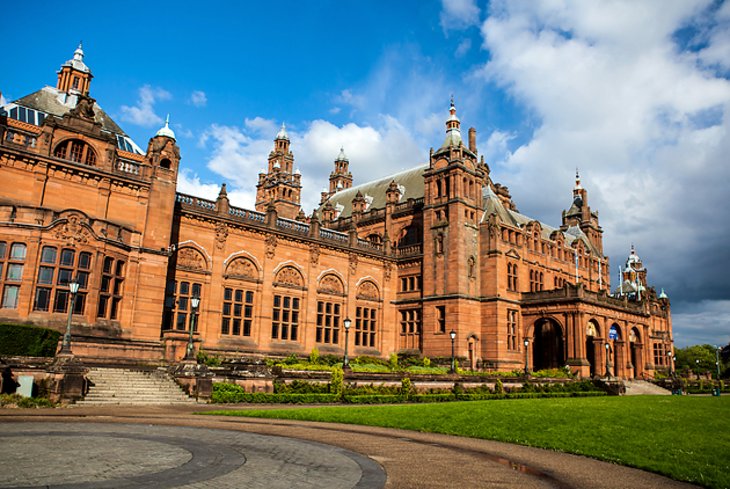
The bustling entertainment and shopping mecca of Sauchiehall Street, now almost entirely given over to pedestrians, is more than 1.5 miles long and offers the largest range of shops in the city. Sauchiehall Street ends at Argyle Street in the city's West End, a trendy area of cafés, restaurants, high-end shops, posh hotels, and, perhaps most importantly, the wonderful Kelvingrove Art Gallery and Museum.
Opened in 1901, the museum has a fine collection of British and continental paintings, including such gems as Van Gogh's portrait of the Glaswegian art collector Alexander Reid, and Salvador Dali's Christ of Saint John of the Cross.
An exceptional series of galleries features the Glasgow School of Art and its best-known figure, Charles Rennie Mackintosh, with completely furnished rooms, pottery, metalwork, furniture, and other works of art. Scottish archaeological finds include Bronze Age tools and jewelry from Arran, Kintyre, and Glenluce.
Other exhibits of interest include weapons and armor, such as helmets, crossbows, and swords from the 15th and 16th centuries, as well as Flemish tapestries, Glasgow-made jewelry, silverware, glassware, and pottery from various periods.
Address: Argyle Street, Glasgow
Official site: www.glasgowlife.org.uk/museums/kelvingrove/Pages/default.aspx
George Square and the Merchant District
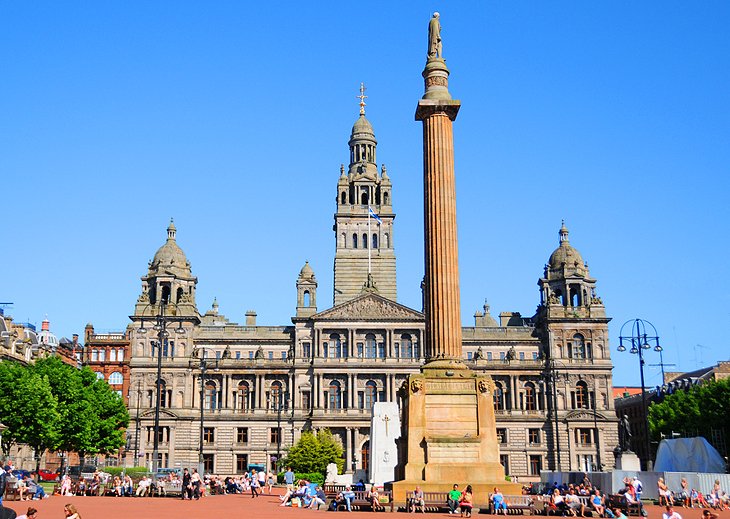
At the heart of Glasgow's historic Victorian city center stands the flower-bedecked George Square with its 12 statues of famous people associated with the city, including Robbie Burns, Walter Scott, and Queen Victoria. The east end of the square is dominated by the Town Hall and its 230-foot tower, completed in 1890, while the Merchants' House is the headquarters of Britain's oldest Chamber of Commerce, founded in 1605.
South of George Square, a group of mid-19th-century warehouses is part of the city's trendy Merchant City district that, along with The Italian Centre, offers unique cafés, restaurants, and designer boutiques. The area is particularly attractive in winter, when families and those here enjoying some Glasgow sightseeing are bedazzled with an impressive display of Christmas lights.
A Walk through the Necropolis
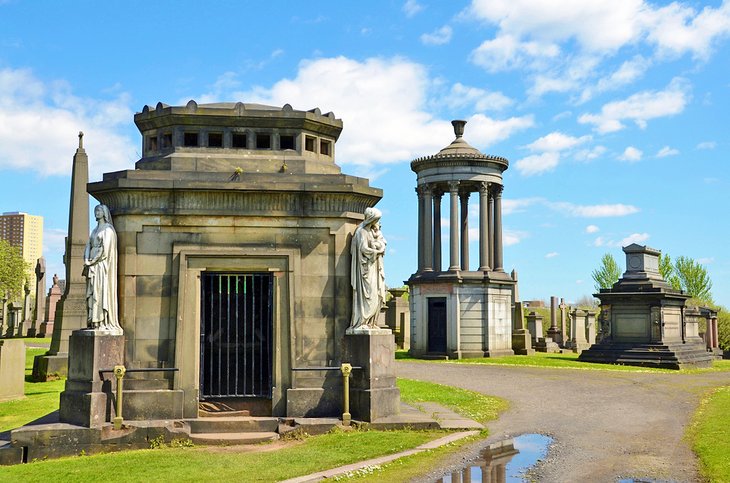
Neighboring Glasgow Cathedral is the Necropolis, a Victorian Gothic garden cemetery that covers 37 acres that has famously been described as a "city of the dead." It is filled with not only beautiful memorial stones — all told, some 3,500 of them — but also sculptures and buildings designed by Glasgow artists, including Charles Rennie Macintosh.
Intricately carved Celtic crosses mingle here with weeping angels in atmospheric surroundings of tree-shaded walks that open to views of the cathedral and city. A variety of informative walking tours are available and recommended.
Address: Castle Street, Glasgow
Official site: www.glasgownecropolis.org/
The University of Glasgow: The Hunterian Museum and Art Gallery
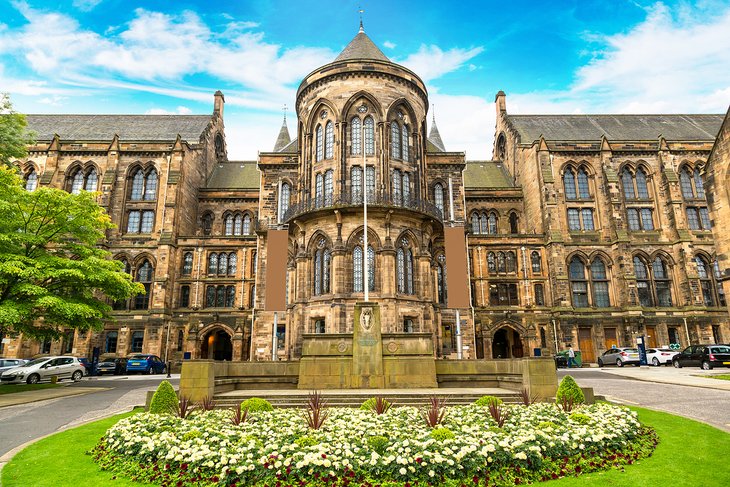
The University of Glasgow dates from 1451 and is the second-oldest school of higher education in Scotland. The university has employed many illustrious teachers over the centuries, including James Watt; Adam Smith; and the "father of antiseptic surgery," Joseph Lister. A permanent exhibition at the Visitor Centre on University Avenue goes into more detail about the important discoveries made by these and other scientists who taught here.
Another famous scientist with connections to the university was William Hunter, an 18th-century Glaswegian doctor who bequeathed his collection of anatomical parts, coins, and objets d'art to form the basis of the Hunterian Museum. The museum now includes collections from the departments of ethnography, zoology, geology, and archaeology, including many finds from Roman sites. Artwork on display includes works by Rubens, Rembrandt, and Reynolds.
The gallery also houses the reassembled principal interiors from the Glasgow home of architect Charles Rennie Mackintosh and his artist-wife, Margaret Macdonald Mackintosh.
Address: University Avenue, Glasgow
Official site: www.gla.ac.uk/hunterian/
Riverside Museum and Tall Ship
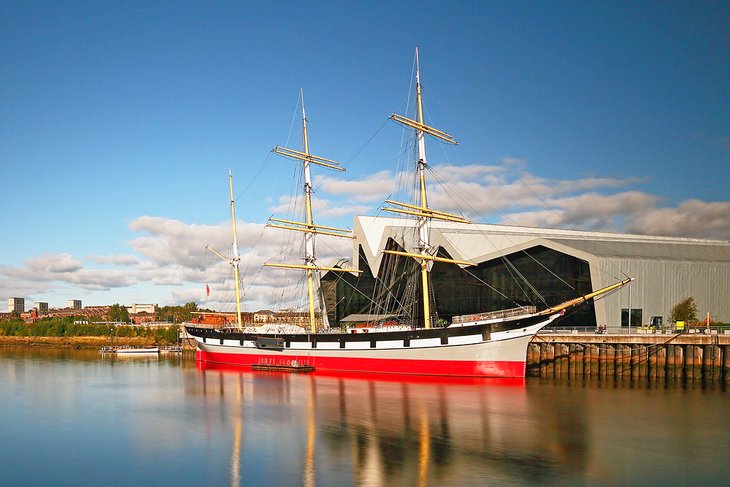
Glasgow's ultra-modern, award-winning Riverside Museum includes many of the exhibits from the city's former Transport Museum, including model ships, locomotives, trams, vintage cars, and horse-drawn carriages. The majority are Glasgow-built.
A superb reconstruction of a 1938 Glasgow street has been added to the displays, as well as exhibits on immigration and disasters, featuring the sinking of the Lusitania. The Tall Ship at Riverside is docked just outside, giving visitors the opportunity to explore the Glenlee, a Glasgow-built three-masted barque that has been carefully restored by the Clyde Maritime Trust. Interesting guided tours are available, sometimes with costumed guides.
Those interested in museums and antiquities should also plan on paying a visit to the Glasgow Museums Resource Centre. This fascinating facility is where many of the city's museums store their collections when they are not on display. Think of it a little like a visit to a Costco, but nothing's for sale. It's a large place, with its many storage rooms stacked high with everything from artworks and sculptures to armor and weaponry; in fact, more than 1.5 million artifacts are stored here, so chances are you'll see something of interest.
Guided tours are provided, along with interesting lectures and workshops, including programs aimed at younger travelers.
Address: 100 Pointhouse Road, Glasgow
Official site: www.thetallship.com/
Glasgow Science Centre & Glasgow Tower
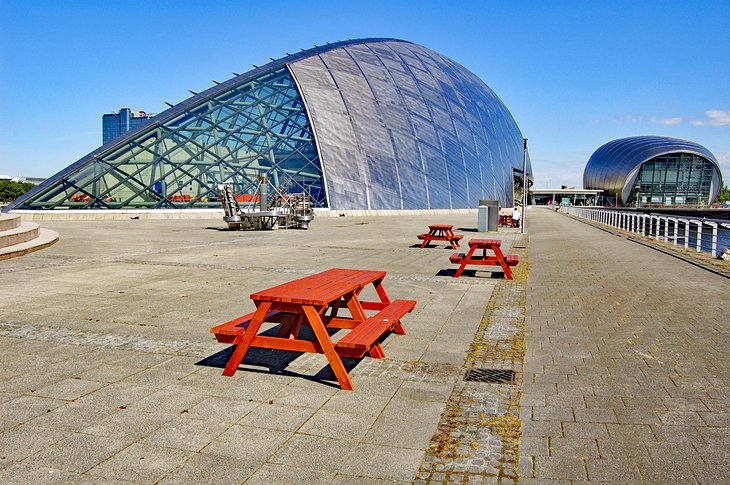
A must-visit sightseeing opportunity for families, the Glasgow Science Centre is a great way to spend time together. Located in the waterfront area near the Riverside Museum, this popular attraction is housed in a suitably striking titanium-clad building shaped like a ship's hull and offers no-end of hands-on fun and exploration.
Notable exhibits include human health, technology, and general scientific principles, along with a variety of laboratory-type stations where kids can attempt a few practical experiments based on their newly acquired knowledge. Also worth checking out here are the planetarium, an IMAX cinema, and a science theater, where regular lectures and talks are held.
This is also the site of Glasgow Tower, Scotland's tallest building. It soars 127 meters (417 feet) high and offers panoramic views of Glasgow and the surrounding landscape from its observation platform. What makes this a truly unique spectacle, however, is that the entire structure is able to rotate a full 360 degrees. It was designed this way to withstand wind, and is the tallest of its kind in the world.
Although it is perfectly safe, the tower closes to visitors on particularly windy days because its movement underfoot can be quite unsettling.
Address: 50 Pacific Quay, Glasgow
Official site: www.glasgowsciencecentre.org
Pollok House and Pollok Country Park
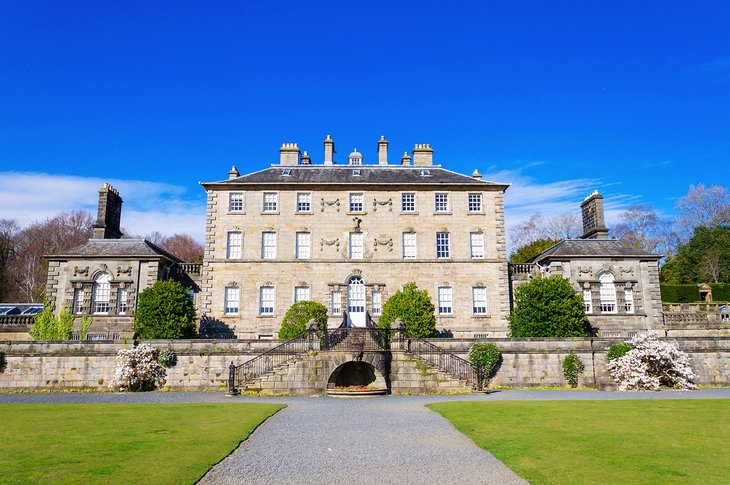
Close to four miles southwest of Glasgow's city center, the grounds of Pollok House cover an area of 355 acres. The home of the Maxwell family, this Edwardian mansion was built in 1752 by William Adam and his sons.
The majority of the expansive building is now open for visitors to explore, from the grand entrance hall to the extensive servants' quarters. Sir William Stirling Maxwell's collection of Spanish paintings by El Greco, Goya, Murillo, and Velázquez hangs on display, as well as several significant works by William Blake. Guided and self-guided tours are available.
The adventurous will want to try the unique "Escape the Past" game, a fully interactive exhibit that challenges players to solve puzzles and find their way back to the present day. The grounds of the estate include the Pollok Country Park, where you can admire the meticulously kept gardens or walk some of the trails that lead through woodlands and to the river side, and follow in the footsteps of characters from the hit TV show, Outlander. A highlight of a visit is the chance to enjoy a meal or snack in the Edwardian Kitchen café.
Address: 2060 Pollokshaws Road, Glasgow
Official site: www.nts.org.uk/Property/Pollok-House/
Kibble Palace and Glasgow Botanic Gardens
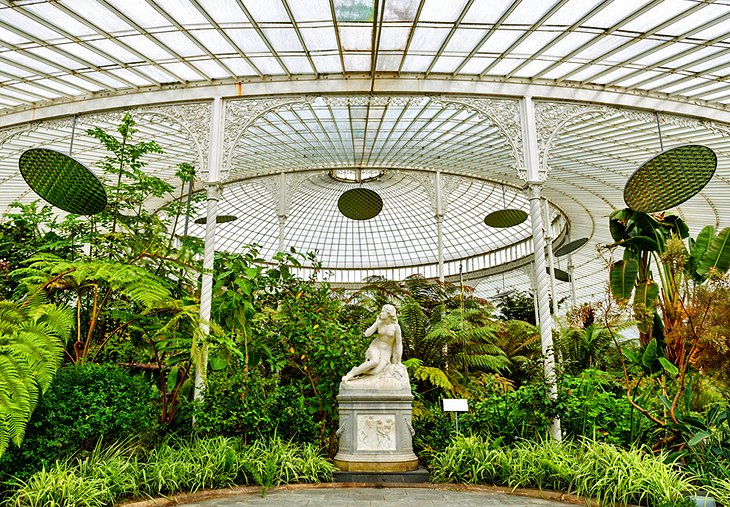
For more than 200 years, the Glasgow Botanic Gardens have served as an oasis of natural beauty for the residents and visitors of Glasgow's West End. Originally founded in 1817, the gardens began as a conservatory for students at the University of Glasgow.
Built in 1873, Kibble Palace is the main attraction and one of the largest glasshouses in Britain. It contains a collection of rare orchids; tree ferns from Australia and New Zealand; and plants from Africa, the Americas, and the Far East. The grand structure is constructed of wrought iron and glass, providing a striking setting. Additional glasshouses include a variety of tropical plants that can be enjoyed year-round.
Among the outdoor gardens are the World Rose Garden and Children's Garden, which has a playground. There is also a designated walking path designed with families in mind, as well as a Heritage Trail that leads to the Kelvin Walkway.
One of the most popular things to do at the Glasgow Botanic Gardens is to have a formal tea at the Tearoom in the Curator's House. Open seasonally, visitors can enjoy sitting among the foliage and flowers while enjoying a traditional tea time. There are also year-round dining options on-site, as well as plenty of space to spread out on the grass with a picnic.
Another beautiful park to visit is Bellahouston Park, site of the 1938 Empire Exhibition attended by more than 13 million visitors and still popular for its colorful flowerbeds. A star attraction here is the wonderfully named House for an Art Lover, built in 1996 to a design by Charles Mackintosh. This picturesque structure frequently hosts art exhibits and other events, while the park itself hosts frequent music concerts. Greenbank Gardens is another beautiful spot which features pools and fountains within its multiple walled gardens.
Address: 730 Great Western Road, Glasgow
Official site: www.glasgowbotanicgardens.com
Glasgow Green and the People's Palace
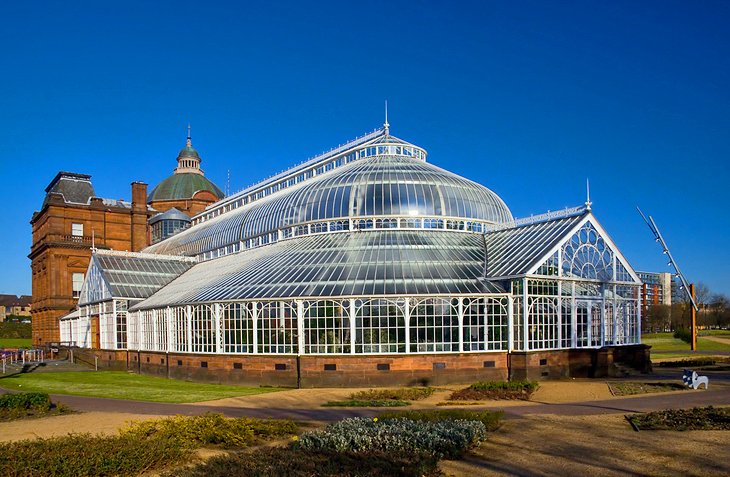
Note: The People's Palace and Winter Garden have undergone major renovations in the last decade that have seen on-and-off, multi-year closures. At the time of writing, this attraction was closed.
Laid out in 1662, Glasgow Green is by far the oldest of the city's parks and is an easy walk from the city center. One of the park's main attractions is the People's Palace, a museum built in 1898 that tells the story of Glasgow from 1750 through the 20th century. Exhibits include a reproduction of a "Single End" home from the 1930s, a look at "the steamie" bathhouses, and a display dedicated to remembering the dance hall at the Glasgow Barrowlands Ballroom.
The Winter Garden, a large conservatory at the back of the palace, contains a fine collection of tropical and subtropical plants. Be sure to also visit the lovely Doulton Fountain, the world's largest terracotta fountain. An impressive 46 feet high and 70 feet across, it was built to commemorate Queen Victoria's Golden Jubilee and contains figures from across the Commonwealth. Another attraction is Nelson's Monument, an impressive column built in 1806 to commemorate Horatio Nelson's victories.
Address: Glasgow Green, Glasgow
Official site: www.glasgowlife.org.uk/museums/peoples-palace/Pages/default.aspx
The National Piping Centre and the Bagpipe Museum
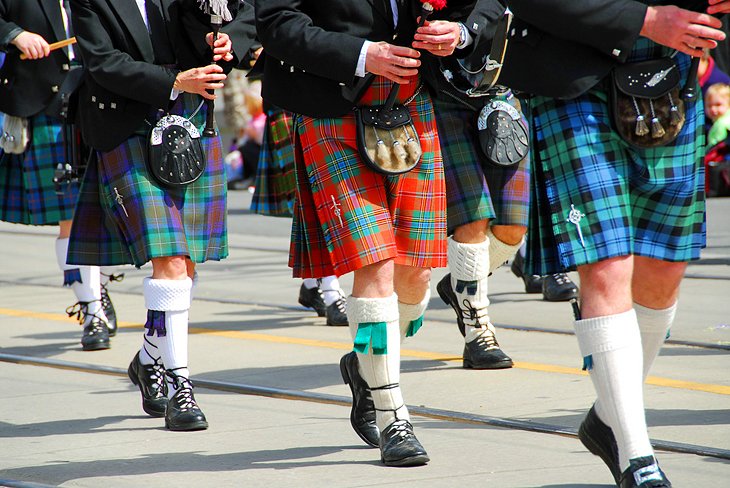
The National Piping Centre is an excellent resource for those with a passion for bagpipes and drumming, whether as a performer or a fan. Lessons and courses are available, including intensive bagpipe schools held at a variety of locations worldwide. The National Piping Centre is also home to the superb Museum of Piping, which includes piping memorabilia belonging to Robbie Burns and the 17th-century Iain Dall MacKay chanter, the world's oldest surviving bagpipe relic.
A well-stocked shop brimming with piping-related supplies, music, and mementoes is also open to the public (the center also has its own hotel and restaurant). Glasgow hosts the annual World Pipe Band Championship, the world's largest such festival, held every August on Glasgow Green.
Address: 30-34 McPhater Street, Glasgow
Official site: www.thepipingcentre.co.uk
Gallery of Modern Art (& Other Must-Visit Galleries)
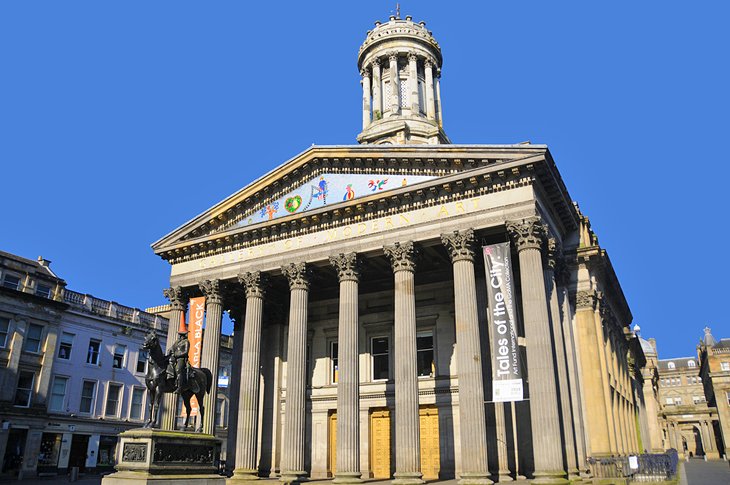
For art lovers, Glasgow is something of a feast. In addition to facilities such as the Kelvingrove Art Gallery, this revitalized city has more galleries and related things to do than could possibly be enjoyed in a day or two, so plan on staying longer to get a true Glaswegian art fix.
Leading our list of other must-visit art facilities is the superb Gallery of Modern Art. Known locally simply as the "GOMA," this Romanesque structure is home to an often changing roster of exhibits featuring both local and international artists, along with workshops and lectures. And keep a look out for the equestrian statue outside the facility-chances are it'll have a cone placed on its rider's head, a typical Glaswegian gesture indicating an often irreverent attitude to local authorities, who have long since given up removing it.
Address: Royal Exchange Square, Glasgow
Official site: www.glasgowlife.org.uk/museums/venues/gallery-of-modern-art-goma
The Tenement House
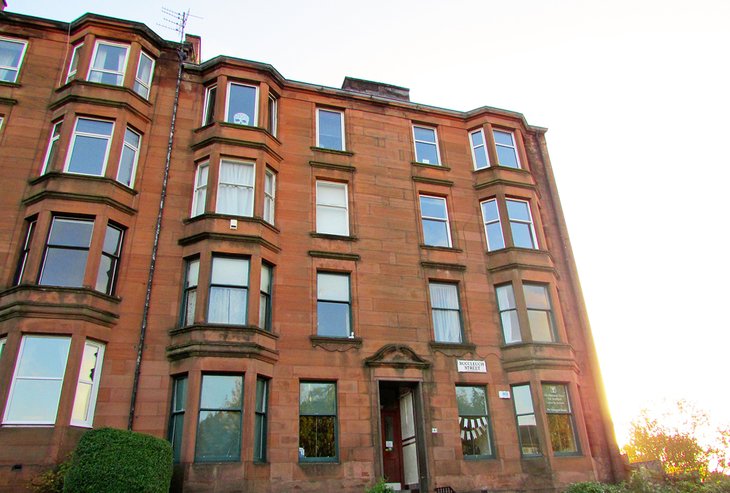
This small museum is a time capsule of the life of Agnes Toward, a typist who lived alone in one of Glasgow's 19th-century tenement apartments from 1911 through 1965. Although she remained in this home for over 50 years, Agnes's residence changed very little from how she kept it in the 1920s, almost frozen in time. Preserved by the National Trust for Scotland, the home sits just as it did when Agnes lived here.
Among the most interesting features of the apartment are its working gas lights and the original 1892 coal-fired kitchen stove, complete with stovetop, oven, and iron-heating racks. The kitchen is fully outfitted with century-old cookware and cleaning supplies, including a hand-crank laundry wringer. Each room contains its original furniture, including well-preserved Victorian-era horsehair chairs, a box bed, a piano, and a pedal-operated sewing machine in excellent condition.
The collection here is particularly unique because Agnes kept many everyday items that most would have disposed of, offering visitors the chance to see the more mundane items that are often excluded from historic re-creations.
Address: 145 Buccleuch Street, Glasgow
The Burrell Collection
The Burrell Collection is another gallery that should be included in your Glasgow art itinerary. Located in Pollok Country Park, this impressive collection features important medieval artworks, stained glass, sculptures, plus tapestries dating back over 500 years.
The collection showcases the eclectic personal collection of over 9,000 objects gifted to the city by shipping magnate Sir William Burrell and his wife, Constance.
Following a major redesign, the museum reopened in 2022 to international acclaim, winning Art Fund Museum of the Year in 2023. Its light-filled galleries beautifully integrate the priceless artworks with the surrounding woodland.
Glasgow Central Station
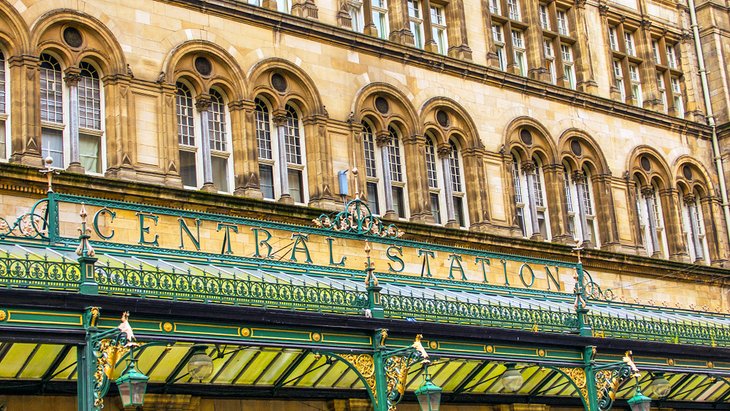
Glasgow Central Station is well worth a visit even if you aren't planning to hop aboard a train. This beautiful Victorian station exudes grandeur and historic charm while serving as Scotland's busiest rail station, fitted with modern amenities. It opened in 1879 as the city's second major station, and today houses a variety of restaurants, cafés, and shops.
Among its most stunning architectural features is Heilanman's Umbrella (Scottish Gaelic for "Highlandman's Umbrella"), a glass-walled bridge that connects the main station to Argyle Street. It was given this name because this was a common meeting place for immigrants from the north, providing them a centrally located spot that offered cover.
It is also home to the voco Grand Central Glasgow hotel, which features a lovely Queen Anne-style façade. Visitors can book tours that explore the station's hidden vaults and abandoned subterranean platforms.
The Lighthouse
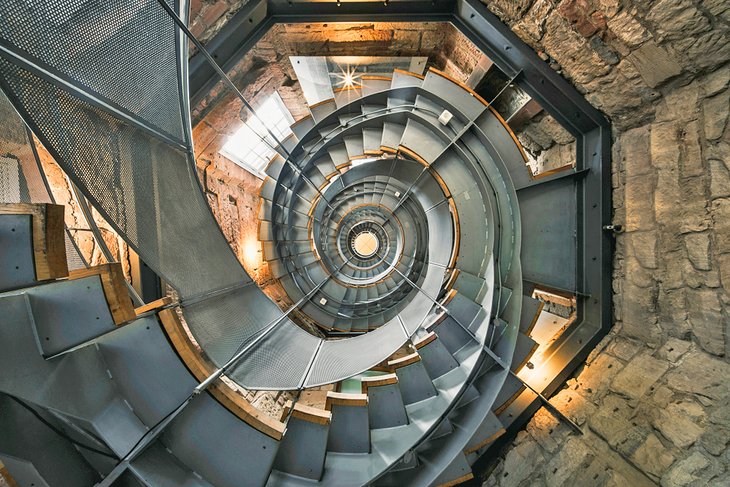
The Lighthouse is home to Scotland's Centre for Design and Architecture, which features both permanent and rotating art exhibits of contemporary Glasgow artists and designers. It is also home to an exhibit honoring Charles Rennie Mackintosh, who designed the building, formerly home to the Herald newspaper. The Lighthouse is also known for Mackintosh Tower, a stunning stone structure that can be climbed via a spiral staircase for excellent views.
Those into other art forms, including music, film, literature, and theater, should also visit the Centre for Contemporary Arts. They host a variety of exhibits, workshops, performances, and festivals year-round.
Address: 11 Mitchell Lane, Glasgow
Official site: www.thelighthouse.co.uk
Map of Tourist Attractions in Glasgow
Glasgow - Climate Chart
| Average minimum and maximum temperatures for Glasgow, United Kingdom in °C | |||||||||||
| J | F | M | A | M | J | J | A | S | O | N | D |
| 6 1 | 7 1 | 8 2 | 11 3 | 15 6 | 17 9 | 19 11 | 18 11 | 16 8 | 12 6 | 9 3 | 7 2 |
| PlanetWare.com | |||||||||||
| Average minimum and maximum temperatures for Glasgow, United Kingdom in °F | |||||||||||
| J | F | M | A | M | J | J | A | S | O | N | D |
| 43 34 | 44 34 | 47 36 | 52 38 | 59 43 | 63 48 | 66 52 | 65 51 | 60 47 | 54 42 | 48 37 | 44 35 |
| PlanetWare.com | |||||||||||
More Must-See Attractions near Glasgow
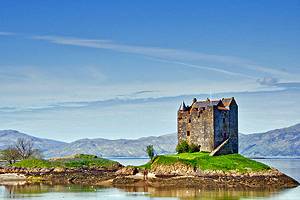
Some of Scotland's top attractions can be easily explored on day trips from Glasgow. One of the most famous sites in all Scotland, Loch Lomond is a short train ride from the city. From here, you can take one of Europe's most beautiful train rides, from Balloch to Oban, gateway to the Isle of Skye and the Hebrides. Southwest of Glasgow are lovely Ayrshire and Dumfriesshire, where you can follow a trail of attractions connected to poet Robbie Burns. The elegant city of Edinburgh is a train-ride away to the east, crowned by the impressive Edinburgh Castle.
